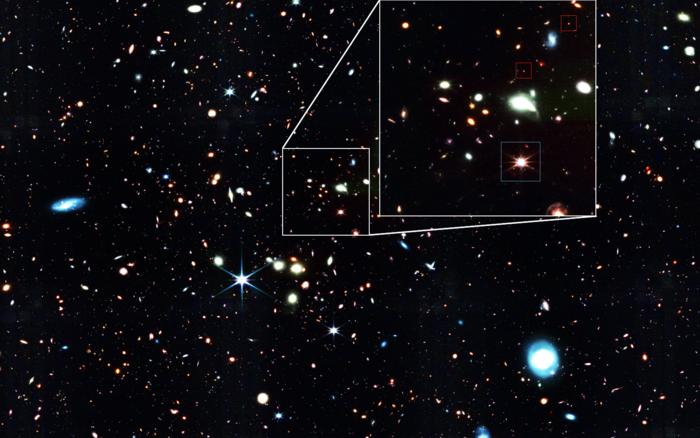Small red dots in the sky are tiny black holes, scientists say
Breakthrough found with Nasa’s Webb telescope

Red dots in the sky are tiny black holes, scientists say.
The specks in the distant universe could change our understanding of how supermassive black holes form and explain mysteries in that process, according to the researchers who found them.
Scientists had seen the small red dots through the Hubble Space Telescope. But they looked like normal galaxies.
Now Nasa’s James Webb Space Telescope has helped reveal their true identity. They are baby versions of very massive black holes, scientists say.
“Without having been developed for this specific purpose, the JWST helped us determine that faint little red dots–found very far away in the Universe’s distant past–are small versions of extremely massive black holes. These special objects could change the way we think about the genesis of black holes,” said Jorryt Matthee, from the Institute of Science and Technology Austria.
“The present findings could bring us one step closer to answering one of the greatest dilemmas in astronomy: According to the current models, some supermassive black holes in the early Universe have simply grown ‘too fast’. Then how did they form?”
After being so mysterious that some doubted they could exist, it has become increasingly clear that supermassive black holes are spread throughout the universe. There is thought to be one at the centre of almost every large galaxy – including our own – and they can reach to as billions of times the mass of the Sun.
But some are much more active than our own largely sleeping giant black hole. They eat up vast amounts of matter and become bright enough that we can see them at the edge of the universe – known as quasars, they are among the brightest objects in the cosmos.
Some of those quasars appear too massive to exist, given the age at which they are seen. Scientists refer to them as “problematic” because they appear to have grown more quickly than is thought possible.
The newly discovered objects could help explain that problem. They appear to be to be “baby quasars”, the scientists say, with a smaller mass and a different colour than those problematic ones.
The problematic quasars are blue, extremely bright and can be as massive as billions of our Sun, while the red dots may only be as massive as ten Suns and have a red colour because of the dust around them. But researchers might now be able to track how they go onto become those problematic, blue and bright, quasars that have proven so problematic until now.
“Studying baby versions of the overly massive SMBHs in more detail will allow us to better understand how problematic quasars come to exist,” said Matthee.
The findings are reported in a new paper, ‘Little Red Dots: An Abundant Population of Faint Active Galactic Nuclei (AGN) at z ~ 5 Revealed by the EIGER and FRESCO JWST Surveys’, published in The Astrophysical Journal.
Subscribe to Independent Premium to bookmark this article
Want to bookmark your favourite articles and stories to read or reference later? Start your Independent Premium subscription today.

Join our commenting forum
Join thought-provoking conversations, follow other Independent readers and see their replies